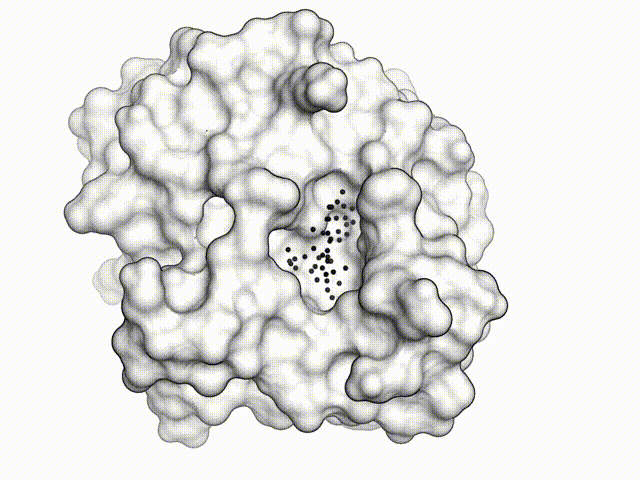COVID-19 vaccines are essential for preventing serious disease, but the identification of new drugs is still necessary for the treatment of patients who become sick as a result of SARS-CoV-2 infection. In light of this, an international group of scientists conducted a massive computational and crystallographic screening effort to identify small organic molecules (“fragments”) with the potential for use in drug compounds. The crystallographic screening was conducted in part at Berkeley Lab’s Advanced Light Source (ALS).
“We developed a screening pipeline that allows us to identify hundreds of fragments that can be used to guide the development of an inhibitor that would make it harder for the virus to replicate and change the immunological response,” said James Fraser, a biophysicist at the University of California San Francisco (UCSF). “The identification of a large number of fragments that interact with important parts of a key viral protein enables researchers to use these small molecules as building blocks for more potent, drug-like molecules.”
The researchers focused on a region of the coronavirus—the Mac1 domain—that helps block signals that are critical to mounting a proper immune response. Thus, the identification of compounds that bind Mac1 and inhibit its activity is key to biophysically inactivating the virus.
X-ray crystallography was used to screen 2533 diverse fragments, resulting in 214 unique Mac1 binders. To work through the massive number of molecules, the researchers used beamlines at the ALS (8.3.1), NSLS-II, and SSRL, and teamed up with collaborators at Diamond Light Source in the UK. Also, a library of 20 million fragments was computationally screened, resulting in an additional 60 small molecules with the potential to “dock” with Mac1. Of those, 20 were crystallographically confirmed, for a total of 234 fragment structures that can serve as starting points for the development of potent SARS-CoV-2 drugs.
“While we were optimistic going into this, the success rate was very high—a testament to the high-quality structural data that we were able to collect,” said Roberto Efraín (Robbie) Díaz, a graduate student in the Fraser Lab who worked on the project. “We are now exploring how to link the fragments together to create potent inhibitors, with some notable successes.”

M. Schuller, G.J. Correy, S. Gahbauer, D. Fearon, T. Wu, R.E. Díaz, I.D. Young, L. Carvalho Martins, D.H. Smith, U. Schulze-Gahmen, T.W. Owens, I. Deshpande, G.E. Merz, A.C. Thwin, J.T. Biel, J.K. Peters, M. Moritz, N. Herrera, H.T. Kratochvil, QCRG Structural Biology Consortium, A. Aimon, J.M. Bennett, J.B. Neto, A.E. Cohen, A. Dias, A. Douangamath, L. Dunnett, O. Fedorov, M.P. Ferla, M.R. Fuchs, T.J. Gorrie-Stone, J.M. Holton, M.G. Johnson, T. Krojer, G. Meigs, A.J. Powell, J.G.M. Rack, V.L. Rangel, S. Russi, R.E. Skyner, C.A. Smith, A.S. Soares, J.L. Wierman, K. Zhu, P. O’Brien, N. Jura, A. Ashworth, J.J. Irwin, M.C. Thompson, J.E. Gestwicki, F. von Delft, B.K. Shoichet, J.S. Fraser, and Ivan Ahel, “Fragment binding to the Nsp3 macrodomain of SARS-CoV-2 identified through crystallographic screening and computational docking,” Sci Adv. 7, eabf8711 (2021), doi:10.1126/sciadv.abf8711.